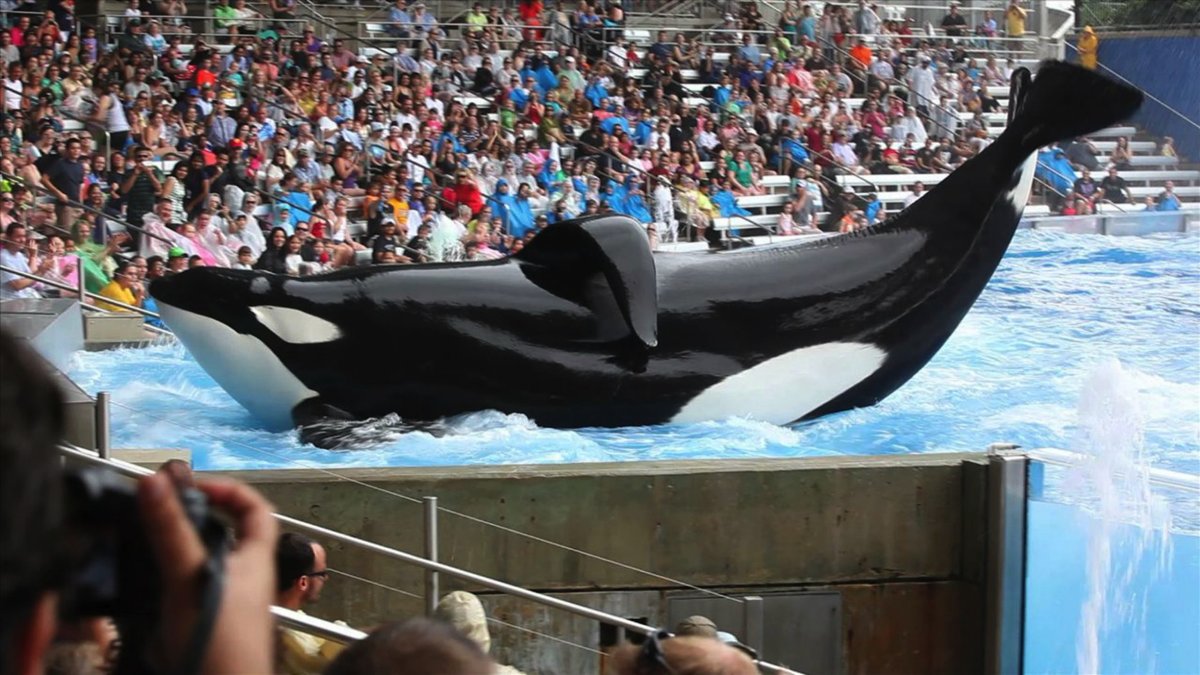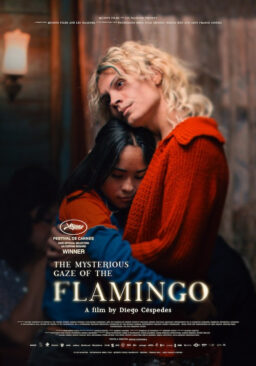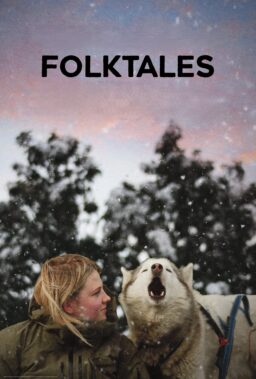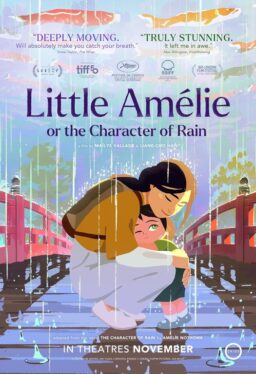“The theme is that we started the problem.”
Gabriela Cowperthwaite, director of the new documentary “Blackfish,” isn’t talking about her own film there, nor of the issue of whale captivity that it addresses. Rather, she’s talking about the 1977 horror flick “Orca,” a knockoff of “Jaws” that gave many of us a false connotation for killer whales as being both terrifying sea monsters and, compared to sharks, only second-rate ones at that.
“The film actually depicts human folly,” she told me via phone last week. She first saw the Dino De Laurentiis production as a child and now includes clips of it in her documentary. “I think it’s that a man shoots a pregnant whale, and then the bull—the father of that calf—chases down this guy until he kills him. It was only later that I thought to myself, oh, that film was trying to say something that kind of echoes a little bit in ‘Blackfish.'”
In a way, the documentary is itself a kind of horror film, albeit one with a more serious and real narrative. And distributor Magnolia Pictures appears to be trying to sell it as such. One poster features a picture of a menacing-looking orca staring out at us. Trailers focus sensationally on chilling 911 calls and devastatingly true cases of people being injured or even killed by the animals at marine life theme parks. Very scary stuff.
And it’s not exactly a deception. “Blackfish” is primarily the story of a specific captive orca named Tilikum, who has taken the lives of multiple humans over the years, most recently in 2010 with an incident that led to the death of one of SeaWorld’s most expert trainers, Dawn Brancheau. And like “Orca” and many fictional movies about serial killers and slashers, it gets at the root of how the person or thing became a murderer. Or tries to.
“When I started the film and learned about that accident, I was terrified of Tilikum,” the filmmaker explains about the inception of what became an investigative journey. “I didn’t feel natural empathy for him. I just thought he was a 12,000 pound killer, and that’s all I could think of when I saw pictures of him and when I read the autopsy report and heard about how deliberate and brutal that incident was.”
The pursuit of answers took Cowperthwaite further than the bull orca’s first kill in 1991, further than his birth a decade earlier and capture at age 3, back to the early 1970s when live captures hit their peak and documented cases of captive orcas attacking humans first began. “I had to go back 40 years,” she says, “not only for my storytelling structure but really to reconcile my own feelings about that whale, and understand what kind of hand we had in possibly creating an animal that is capable of doing these things.”

The documentary is the latest in an ongoing trend in nonfiction cinema of the revisionist wildlife film that aims to break down stereotypes of the animal kingdom perpetuated in movies and television nature programs and also explore unnaturally contrived relationships humans are attempting with these animals. “Blackfish” joins a crop of varied yet like-minded works including Werner Herzog’s “Grizzly Man,” James Marsh’s “Project Nim,” 2010 Oscar winner “The Cove” and the lesser known “Sharkwater,” which goes up against a very well-established system of demonization, offering a counterpoint to the fear-based ignorance and exploitation behind everything from “Shark Week” to “Sharknado.”
Another relevant documentary is the 2011 Ryan Reynolds and Scarlett Johansson-produced film “The Whale,” about a young wild orca that abnormally confined itself to a small inlet in Vancouver, seemingly to befriend the locals. Michael Parfit is one of the directors of that project, which provided some footage used in “Blackfish.” He told me via email that the connection between all these films is “a widespread recognition that humans and animals are not so far apart, both in geographical fact as we encroach farther and farther into their domains, and in our fundamental biology and emotional lives.”
He also says these films, whether motivated by advocacy or storytelling (he labels his the narrative variety), are commonly about respect.
“Both science and these creative efforts show that we can no longer treat other animals as second-class citizens of life,” he explains. “Our growing respect for their similarities to us teaches us also to respect their differences.” Particularly with “The Whale,” the filmmakers intention was to portray orcas more realistically than had been done in the past, following the cognitive ethology of academics like Donald Griffin and Marc Bekoff, as well as Jane Goodall.
While “Blackfish” is obviously closest in subject to Parfit’s film, it’s not quite as scholarly in its influences and really falls somewhere more between two of the other titles. On the one hand Cowperthwaite has made a movie that condemns killer whale captivity (or at least how the animals are treated in captivity), much like the advocacy for dolphins in “The Cove.” And on the other hand it seeks to broaden our consideration of killer whales as being more than one-dimensional creatures, akin to what filmmaker Rob Stewart does for sharks with “Sharkwater.” Our perception of orcas has also long been split into two extremes: sweet and lovable aquatic friend or deadly, predatory beast.
It’s a strange duality. You’d never see a movie like “Orca” about a dolphin (outside of the film within a film of “One Crazy Summer,” that is) and you’d never see a movie like “Free Willy” about a boy’s friendship with a shark. “They’re malevolent enemies or they’re big-eyed toys,” Parfit says of the ironic split. “What I think we’re learning now—that they live complete and perhaps fully self-aware lives on their terms and with their own agendas, lives that only sometimes include interaction with us—makes both those historical preconceptions seem archaic.”

Surprisingly, Cowperthwaite has never seen the “Free Willy” movies (which are ironically aligned with the extreme perpetuated by SeaWorld and its ilk), and neither had the former trainers who appear in “Blackfish” that I asked. Samantha Berg (at left in photo), who worked at SeaWorld in Orlando from 1990 to 1993, is familiar enough with the first installment to know that it “wasn’t necessarily about these animals and what their lives are like in the wild,” any more than “Orca” was.
Berg names other documentaries as being better depictors, namely the 1997 “Frontline” episode “A Whale of a Business” and Stanley Minasian’s more recent historical film “A Fall From Freedom.” “Both of those really go behind the scenes and show what really goes on at SeaWorld,” she told me by phone. “But I don’t think there’s been another film like what Gabriela has tried to show. Any other time dolphins and whales show up in the movies, they’re generally depicted as these playful, happy-go-lucky characters that want to interact with humans, almost like Lassie. The movie industry in general has not depicted these animals for what they are, and I think this movie’s going to change that.”
Even with a greater familiarity with the scarier of the two mainstream Hollywood depictions of orcas, Cowperthwaite had never previously thought of the animals’ depictions in film and definitely didn’t think of the association of killer whales as in fact being killers. “I didn’t think much about the predator,” she says of her impression of orcas before making the movie. “I just didn’t. I guess that notion of them being possibly dangerous to us has been drummed out of us, with the anesthesia of this over the top technicolor show that stresses what kinds of tricks they can do and how we can jump off their nose. Maybe other people were cognizant that this is a predator that people are swimming with. I feel like I would go hug one if a trainer said to give him a pet or a hug. I would have done it in a second.”
Cowperthwaite admits that pre-“Blackfish” she would visit SeaWorld with her kids and enjoy the “circus-like” killer whale shows. Now her documentary implies that it was that particular chain of popular theme parks more than any other entertainment media that has helped to dispel any negative assumptions people have had with orcas since the corporation began operations half a century ago. More than movies, SeaWorld has shaped our view of orcas because of how much it benefitted them to do so.
Former trainer Jeff Ventre, who also appears in the film, told me via phone interview some of the history of the company’s conditioning going back to the mid 1960s. “So little was known about orcas that SeaWorld initially provided a service to the public of demonstrating that they weren’t “killer” whales; they were basically friendly big dolphins, which is accurate scientifically,” he explains. “Despite that we now know so much more about these animals, they’ve continued to put forth this masterful public relations spin, that these are gentle Shamu dolls. It’s a marketing device. I think the public, including myself and all the former trainers that applied for jobs there really bought into this mythology.”
“I was drawn to the lovable aspects of the killer whale,” Cowperthwaite says of her trip to the park’s attractions only five years ago, as a member of that misled public. “And yet they’re also top predators and take down great white sharks in the wild. And they eat dolphins. That’s a fact nobody wants to think about, because we love dolphins, too. That side’s a little more inconvenient and doesn’t necessarily sell the Shamu doll.”
The odd thing would seem to be that “killer whale” has remained the preferred term for these animals, even contradictorily at SeaWorld where they’ve been turned into kid-friendly mascots and plush playthings. But Cowperthwaite clarifies the negative sounding designation: “A lot of people don’t know this, but killer whales got that name because they kill whales, not because they’re a whale that’s a killer.” Ventre adds that men on whaling ships called them this after watching orcas take down much bigger whales, like humpbacks and blue whales. “They hunt like ‘wolves of the sea,’ which is one of their nicknames,” he says. “So they’ve earned this top predator reputation. I think the term when put in the right context is pretty accurate.”
Still, whether we know the origin or not, there must be people who expect something with “killer” in its name to be dangerous and might even attend a park because of that very thrill. “I think it’s an unfortunate name and misrepresentation of what this animal is all about,” Cowperthwaite says. “They’re tremendously complex. They seem capable of great love. We can’t know what that version of love is to them, but they seem to have powerful social bonds, and some of them are with their families their entire lives. And they’re obviously highly intelligent and have a part of the brain that we don’t even have. They’re much more than that name would suggest.”
The hope is that “Blackfish” will change the shallow perceptions of the animals, as documentaries like these are always intended to do. As Parfit pointed out, though, the greater understanding involves a whole other sort of duality where we consider how similar orcas are to humans and also how different. Cowperthwaite agrees and likes to point out that animals are just as likely to exact punishment, revenge and murder as humans are. “Killer whales are more like us than we ever wanted to believe,” she notes, although it’s worth adding that humans are uncomfortable acknowledging their own capabilities for committing the same deeds, too.
This certainly isn’t the last word on orcas or killer whales or blackfish or whatever you feel appropriate calling them, even if it is a great attempt to depict the truth about the animals compared to what we’ve seen and been told by movies and theme park corporations in the past. Ultimately, Cowperthwaite doesn’t have a certain conclusion about the cause of Tilikum’s behavior, as is evidenced by the film’s address of the whale’s children and grandchildren being a potential concern. Placing even some blame on biology takes away some blame from SeaWorld and captivity in general.
“Nobody really knows,” says Cowperthwaite about the whole nature of Tilikum’s deadly acts. “We don’t know enough to know whether this is hereditary and this is something you’re seeing in his progeny, these kinds of behaviors. Maybe there’s something in Tilikum that genetically you could see passed down in terms of aggression, but a lot of whale trainers say you see aggression at some level in all the whales. There’s also no correlation to whether they were born in captivity or they come from the wild. They each have shown aggressive behaviors.”
Perhaps the theme isn’t that we started the problem, then, but that we made it worse by ignoring the complexity of nature. “This is an animal that’s built to be a predator,” Cowperthwaite argues, “so you’re silly to think you won’t see predatory behavior at some point in that animal’s life span.”












